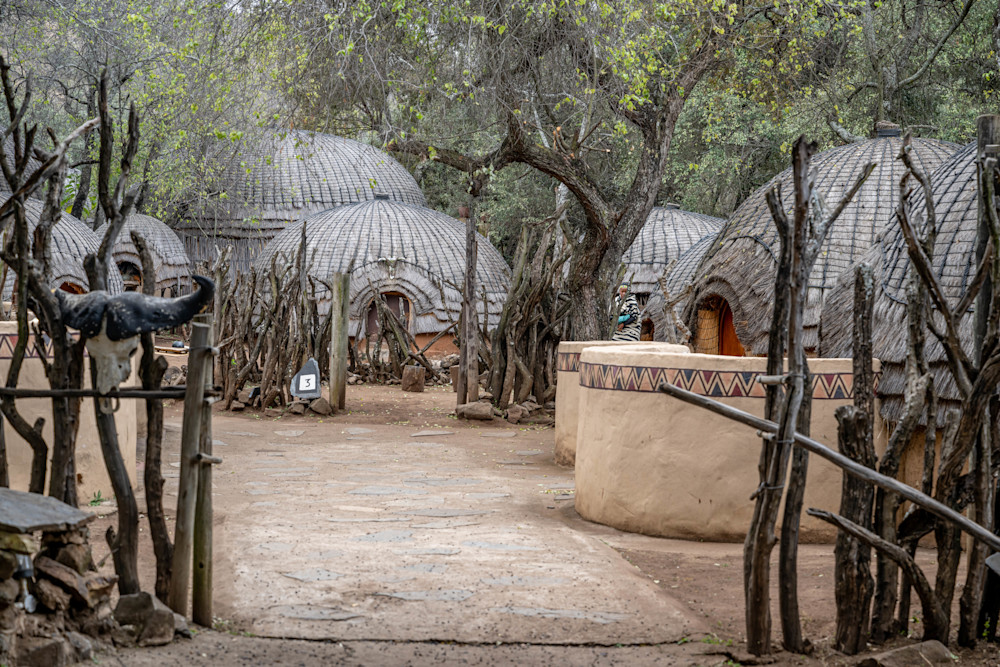A Zulu village scene in South Africa would offer a glimpse into the traditional way of life of the Zulu people, known for their rich cultural heritage and distinctive customs. Here's a descriptive portrayal of a Zulu village scene:
Setting: The village is nestled in the rolling hills of KwaZulu-Natal, surrounded by lush greenery. Traditional thatched-roof huts, known as rondavels, dot the landscape, and the entire scene is framed by the imposing Drakensberg Mountains in the background.
Architecture: Rondavels are circular huts with conical thatched roofs, made from locally sourced materials. The walls are typically constructed with a mix of mud, sticks, and grass, creating a sturdy and weather-resistant structure. The huts are arranged in a circular pattern, often with a central open area for communal activities.
Village Layout: A central gathering space serves as the heart of the village, where villagers come together for meetings, celebrations, and cultural events. The village may be surrounded by a fence or barrier made of thorny branches, providing protection and delineating the community boundaries.
Traditional Attire: Villagers are adorned in vibrant and colorful traditional attire. Women wear intricately beaded jewelry, colorful skirts, and headdresses, while men may be dressed in animal skins, adorned with beadwork, and armed with spears or shields.
Cultural Practices: In the central gathering space, elders might be seen engaged in storytelling, passing down oral traditions and history to the younger generation. A rhythmic beat emanates from a group of villagers playing traditional drums, while others engage in energetic dances that celebrate life events or express gratitude for the harvest.
Livelihood: Livestock, such as cattle and goats, graze in designated areas surrounding the village. Agriculture is a vital aspect of the Zulu way of life, with villagers cultivating crops like maize, sorghum, and vegetables in the fertile soil.
Craftsmanship: Artisans showcase their craftsmanship, creating handwoven baskets, pottery, and intricate beadwork. The village might have a designated area for these crafts, where visitors can observe and purchase these unique creations.
Spiritual Spaces: Nearby, a sacred area or ancestral shrine may be present, marked by stone formations or symbolic objects. This space is revered and used for spiritual ceremonies, connecting the villagers with their ancestors.
Community Bond: The Zulu village exudes a sense of community, where everyone plays a role in the collective well-being. Shared responsibilities and a strong sense of unity are evident in the interactions and daily activities of the villagers.
A Zulu village scene encapsulates not only the tangible aspects of traditional life but also the intangible spirit of community, respect for traditions, and the deep connection to the land and ancestors. It's a living testament to the resilience and vibrancy of Zulu culture in the face of modernity.
















